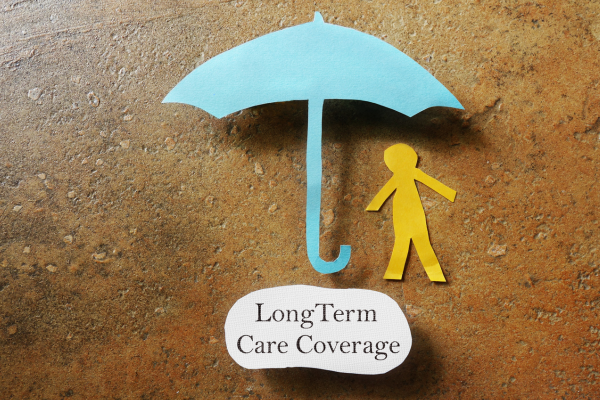Choosing the right term insurance plan is a crucial step in ensuring your family’s financial security in the event of an unforeseen circumstance. With various options available, it can be overwhelming to decide which plan best fits your needs. Understanding how to choose the right term insurance plan involves assessing your financial goals, coverage requirements, and budget. By comparing different plans, considering factors like the sum assured, policy term, premium affordability, and the insurer’s claim settlement ratio, you can make an informed decision. This guide will help you navigate the key factors to consider when learning how to choose the right term insurance plan.
A Term Insurance Plan offers financial protection to your family in case of your untimely death, while Health Insurance covers medical expenses, ensuring peace of mind during health emergencies.
Table of Contents
1. Understand the Basics of Term Insurance
Before diving into how to choose the right term insurance plan, it is important to know what term insurance entails. Term insurance provides life coverage for a specific period, commonly ranging from 10 to 30 years. It is the most basic form of life insurance and pays out a death benefit to the nominee if the policyholder passes away during the policy term.

Unlike other life insurance policies, term insurance plans do not have a maturity benefit, which makes them affordable. The primary focus is providing coverage for your dependents in case of an unforeseen event.
2. Assess Your Coverage Needs
One of the first steps in how to choose the right term insurance plan is to evaluate your financial responsibilities. This includes:
- Your current lifestyle
- Any outstanding debts (like a home loan or personal loans)
- Future expenses (such as children’s education or marriage)
- Living expenses for your family
A general rule of thumb is to ensure that the sum assured is at least 10-15 times your annual income. However, the actual amount will depend on your specific financial situation.
3. Choose the Right Policy Term
The policy term is the length of time your insurance coverage lasts. When deciding how to choose the right term insurance plan, consider your financial obligations and life goals. If you have long-term financial commitments, like young children or a long-term home loan, consider choosing a policy term that aligns with those needs.
It’s advisable to opt for a longer policy term to provide extended coverage, ensuring that your family remains financially secure throughout your key life stages.
4. Compare Plans from Different Insurers
When choosing a term insurance plan, don’t settle for the first option you find. Instead, compare different policies to get the best value for your money. Use online comparison tools to compare premiums, sum assured, the claim settlement ratio, and the additional features or riders offered by various insurers.
This will help you in making an informed decision and ensuring that the plan you choose fits within your budget and coverage requirements.
5. Check the Claim Settlement Ratio
One of the most important aspects of how to choose the right term insurance plan is the insurer’s claim settlement ratio (CSR). CSR reflects the percentage of claims the insurance company successfully settles compared to the total claims it receives.
A high CSR indicates that the insurer has a strong track record of settling claims promptly. This is an important factor to consider as it ensures your beneficiaries will be able to receive the death benefit with minimal complications.
6. Examine the Premium Affordability
While coverage is important, you should also ensure that the term insurance premium fits comfortably within your budget. Term insurance plans are known for their affordability, but the premiums can vary significantly depending on factors such as the sum assured, policy term, and additional riders.
When selecting a plan, balance your coverage needs with the premium you can afford. Also, check for flexible premium payment options such as monthly, quarterly, or annual payments to suit your financial preferences.
7. Consider Riders for Additional Coverage
Riders are additional benefits that can be added to your base term insurance plan to enhance its coverage. Popular riders include:
- Critical Illness Rider: Provides coverage in case the policyholder is diagnosed with a critical illness.
- Accidental Death Benefit: Pays an additional amount if the policyholder dies due to an accident.
- Waiver of Premium Rider: Waives future premiums if the policyholder is diagnosed with a disability or critical illness.
Choosing suitable riders when learning how to choose the right term insurance plan can ensure comprehensive protection for you and your family.
8. Check the Insurer’s Reputation
A reliable and reputable insurer is key to the smooth processing of claims and customer service. When deciding how to choose the right term insurance plan, research the insurer’s reputation. Read customer reviews, check their grievance redressal process, and confirm their level of customer service.
An insurer with a good reputation will be more likely to provide a hassle-free claims experience and ensure that your family is taken care of in difficult times.
9. Understand the Policy Exclusions
Understanding the exclusions of a term insurance policy is crucial in making an informed decision. Most term insurance plans have specific exclusions, such as death resulting from self-inflicted injuries, war-related incidents, or involvement in high-risk activities.
Read the policy document thoroughly and make sure there are no surprises regarding exclusions. Knowing how to choose the right term insurance plan includes understanding these exclusions to avoid future complications.
10. Review the Policy Renewal Terms
Some term insurance plans allow you to renew the policy after the initial term expires. Check if the plan you are considering offers renewal options, and understand the renewal terms. Some policies may increase premiums upon renewal, while others may offer guaranteed renewability.
Ensure that the policy remains affordable and offers flexibility to accommodate your changing needs in the future.
11. Consider Online and Offline Purchase Options
Many insurers offer the convenience of purchasing policies online at discounted premiums. If you’re comfortable with the digital process, buying a policy online can save you money. However, if you prefer to interact with a representative, buying offline might be a better option.
Check the insurer’s website for online purchase discounts and examine the customer support options available if you choose an online purchase.
12. Look at the Tax Benefits
Term insurance policies offer attractive tax benefits under Section 80C of the Income Tax Act, where premiums paid are eligible for deductions. Additionally, the death benefit paid to the nominee is tax-free under Section 10(10D).

Knowing the tax advantages of term insurance can also play a significant role when deciding how to choose the right term insurance plan.
13. Understand the Return of Premium Option
Some term insurance plans offer a “Return of Premium” (ROP) option, where the premiums paid are refunded if the policyholder survives the term. While this option is costlier than regular term insurance, it can provide additional peace of mind to those who are not comfortable with a pure risk plan.
Evaluate whether the ROP option suits your financial goals when considering how to choose the right term insurance plan.
14. Seek Professional Advice

If you’re unsure about which plan to choose, it can be beneficial to consult with a financial advisor. A professional can analyze your financial situation, assess your coverage needs, and help you understand how to choose the right term insurance plan that aligns with your goals.
In conclusion, how to choose the right term insurance plan involves carefully assessing your coverage needs, policy term, and premium affordability. It’s essential to compare plans from different insurers, considering factors like the claim settlement ratio, riders for additional coverage, and the insurer’s reputation. Understanding policy exclusions, renewal terms, and tax benefits can also guide your decision. Additionally, reviewing the return of premium option and seeking professional advice can ensure you select the most suitable plan for your future. By considering these factors, you can confidently decide how to choose the right term insurance plan for your needs.





